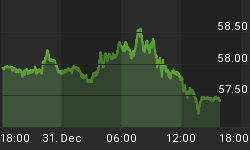In the US, economic data has been mixed lately. Employment numbers have surprised on the downside, while growth has contracted in some sectors. Europe, on the other hand, is moving out of recession, but growth could be tepid for some more time.
Stocks: Breakout or failure?
This has been the pattern for the past two or three years. The US economy has contracted in spring, then expanded in the latter part of year. There are many causes behind this recurring cycle. The eurozone crisis, higher energy prices, and natural disasters each played a role. Mr. Bernanke has warned that the seasonal cycle could happen again and the latest economic data seems to point in that direction. In March, the job market created only 88,000 new positions compared to February's 212,000 new jobs. The labor participation rate fell to 63.3%, the lowest level in almost 34 years. On the other hand, the unemployment rate declined to 7.6% from 7.7%, while hours worked kept increasing. The sequestration spending cuts at the beginning of the month may have inspired businesses to adopt a "wait and see" approach on hiring and new investments.
The ISM Manufacturing Index fell almost 3 points in March, after having increased for three straight months from 49.9 in November to 54.2 in February. Production and new orders were particularly weak. Employment was, however, relatively strong in the manufacturing sector, but declined strongly to 53.3 from 57.2 in the ISM non-manufacturing survey. What will happen to stocks? The S&P 500 Index is challenging the important resistance line of the past 13 years at around 1600. Traders could begin to reduce positions and very strong momentum will be needed for a swing above this level. Seasonally, stocks tend to be strong until May/June then decline until September. This pattern could be repeated this year as well, and a period of consolidation/distribution can be expected.
Eurozone: Will it last?
In effect, few challenges still lie ahead. The eurozone economy probably bottomed out in 2012. Support is coming from positive monetary stimulus and less fiscal tightening. Nonetheless, the continent is exhausted after many years of economic challenges. Old problems, such as national debts in some countries, have not been resolved and are still in the back seat, ready to resurface. Greater political and fiscal union is expected, but integration remains very slow and fragmented. As a result, radical populistic forces are emerging. Their anti-eurozone message is winning the hearts and minds of many Europeans, especially among the younger generations, where the unemployment rate is sometimes near 50%.
In the eurozone, economic growth should remain weak in the coming years. The ECB is ready to cut rates again. For the first time since World War 2, the work force declined in 2012. Annual GDP growth is expected to stay below 2.0%, and companies will not increase investments, when growth is not appealing. Investor confidence is essential for a balanced economy. This would help the account deficit and keep interest rates low. The opposite occurs when confidence is lacking. The crisis in Cyprus shows that the ECB will bail-out the richer European nations, but will ask other countries to find help elsewhere. Consequently, the eurozone will probably not survive another big crisis. The literature on economic cycles shows that worldwide recessions happen every four to five years. The last economic contraction began in 2008 and is expected to occur again shortly. The magnitude of the next fallout will determine whether the eurozone survives or breaks into pieces.
















